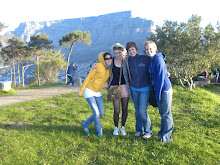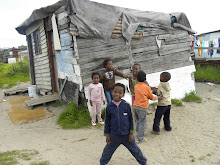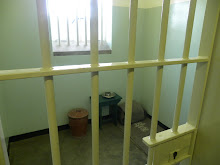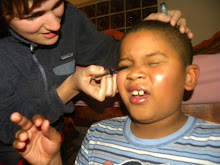YIKES. It appears that in typical American fashion, my inferior American immune system is making imperialist attempts to conquer lands that it isn't prepared, qualified or entitled to defeat. Ok, that was a bit hyperbolic, but seriously, I've had 3 different illnesses since I got here and I'm a bit tired of lying in bed sweating and excreting foul smells whenever my host mother walks into my infirmary of a bedroom (She's absolutely wonderful for putting up with me). Someday call the WAMBULANCE and order me a WAMBURGER and a WEINEKIN ....hahaha. Among other things, South Africa has contextualized my view of suffering, so I'm going to stop being a damn whiny American and tell you what I've been up to these past few weeks.
A few weekends ago, I made the preposterous yet gratifying decision to climb Table Mountain with my three roommates. Somehow, in preparing for the hike, the fact that I was climbing a MOUNTAIN didn't register....go team. It was brutal man, but after 2 hours of climbing what was basically a giant staircase of jagged rocks and wishing that I hadn't eaten so much artichoke pita dip from the restaurant I worked at over the summer in Traverse City, I found myself walking amongst the clouds on what felt like holy ground and gazing...yes, cue cheesy lingo...at the most spectacular view of Cape Town, the Cape Peninsula and the ocean below.
That same afternoon, my roommates and I went on a tour of Cape Town's townships, where the majority of its black population resides. Most of the townships are located in the Cape Flats, a region of land on the periphery of the city. Prior to the development of the townships, the Flats were considered a barren and sandy wasteland, subject to the Cape's notoriously brutal winds and rain. The architects of apartheid however, had no qualms about forcibly relocating the black (and some coloured) populations to the strategically located townships of Gugulethu (“our pride”), Langa (“sun”), Nyanga (“moon”), and Khayelitsha, far from the metropolitan decadence of the city center. Overall, the tour was incredibly enlightening-- visiting the District Six Museum to learn about the forced removals of non-White populations and the creation of “Homelands” for Natives (blacks), touring a typical hostel where male migrant workers were forced to stay (the one we visited was built for 16 single males, it currently houses 23 FAMILIES), visiting a local shebeen and tasting african beer (NASTY!), visiting a local bar and feeling like an awkward white person who can't dance.
I just can't get over how calculated, imperialistic, and brutally racist the aparthied regime was....how recently it was ousted....and how deeply its legacy lives and breathes through every element of this country. To walk into a township as a white person whose fellow race conquered, oppressed and subjugated these people to such often deplorable conditions is personally convicting, challenging and upsetting. How does one respond to such disparity? I'm tempted to just forcibly removed the whites from the posh Southern Suburbs and give the black population free reign over a territory that was originally theirs. But to allow history to repeat itself in this case is not the solution...and South Africa's leaders have passionately declared that this “Rainbow Nation” belongs equally to all those who reside within its borders regardless of race, ethnicity, religion, sexual orientation, etc.
But how then does one resolve history? How can South Africa resolve the fact that while it is firmly committed to inclusive and nondiscriminatory policies in theory, its history of conquest, segregation and apartheid have fundamentally disadvantaged certain racial groups (in particular) from accessing and enjoying this equality under the law. Most blacks in Cape Town, for example, still live in the townships in which their families were forced. Here, a legacy of poverty restricts access to higher education, jobs, and economic advancement. Access to health education is poor, and living conditions are such that disease is rife and health care costs further the cycle of poverty. Even the educated face one of the highest unemployment rates in the world...around 25% for the country and 43% for the black population in major urban areas. What was once deemed a racial conflict is now revealing its true face: a class struggle divided along racial lines.
These are just thoughts, but one cannot help but notice that South Africa is living contradiction. There is arguably nowhere else in the world that such disparity exists. Every major metropolitan area contains pockets of the First, Second and and Third World....”The World in One Country” as some postcards refer to South Africa. And its true...in South Africa one finds a microcosm of the larger world order--the global hierarchy of nations. I'm just struggling to understand how to live in and engage with such disparity...not just to adjust to this beautiful country, but also for when I return to the “land of the free” and the privileges that such citizenship... luck... or maybe randomness endows me. Now that I know, how do I respond?
miss you and sending you much love from cape town, Julia :)
Subscribe to:
Post Comments (Atom)







Hi Julia,
ReplyDeleteI noticed you visited Robben Island recently. I thought you might be interested in The Robben Island Singers, a group of three ex-political prisoners once locked up with Nelson Mandela who are now working in disadvantaged American schools teaching students the lessons from their struggle against Apartheid. Check them out:
The Robben Island Singers